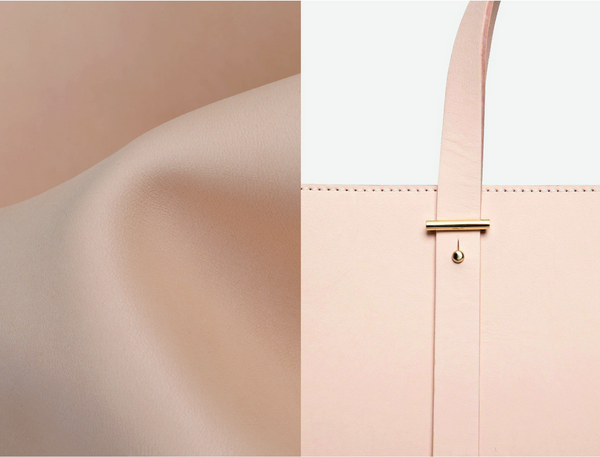From now on, every now and then, we would like to introduce you to an ingredient or process of our work in more detail. We start with chapter 1, vegetable tanned leather, which has a history of 5,000 years.
A few weeks ago I followed an online discussion about sustainability in fashion. One sentence in particular stuck in my mind. '50 years ago the term for sustainability was quality' said Prof. Martina Glomb. She is a professor of fashion design in Hanover, Germany and deals with the topics of upcycling and zero waste under the heading USE-LESS.
We feel connected to the idea of quality. We always try to use excellent materials, made by selected European manufactures who have been committed to producing and processing high-quality materials for generations and whose products have been awarded the highest certificates in the industry.

A few weeks ago I followed an online discussion about sustainability in fashion. One sentence in particular stuck in my mind. '50 years ago the term for sustainability was quality' said Prof. Martina Glomb. She is a professor of fashion design in Hanover, Germany and deals with the topics of upcycling and zero waste under the heading USE-LESS.
We feel connected to the idea of quality. We always try to use excellent materials, made by selected European manufactures who have been committed to producing and processing high-quality materials for generations and whose products have been awarded the highest certificates in the industry.

For vegetable tanning, natural ingredients such as tree bark, pods, roots and natural fats are incorporated in 35 to 55 steps. It takes a long time for the natural tanning ingredients to be fully absorbed by the leather. At the end of the process, they make up 20% of the leather's weight. They give the leather its natural feel, the substances in the leather continue to work and develop their own character, patina, over time.
Less than 10% of all leather produced worldwide is vegetable tanned.
The special feature of light leather, we call the colour natural, is that no natural or synthetic dyes are added to it. That is why it reacts particularly to heat, moisture and fats and changes colour very quickly and becomes darker. I like to think that the change of color is a reflection of the personality of the wearer.
Most of the vegetable tanned leathers we use in our collection come from a family-run tannery in Wallonia, Belgium, which has focused on vegetable tanning for over 170 years. They are working with famous brands in the leather goods industry and have always adapted to the challenges of the times. Currently awarded with the Bronze Standard by the Leather Working Group, they are determined to achieve the Gold Standard in the next audit.
It's all a process. With this I close the first chapter and I am happy to have written the first pages of the 'book' and of course also about any feedback or questions.

Have a nice Sunday
Kindest,
Philipp Bree
Kindest,
Philipp Bree

